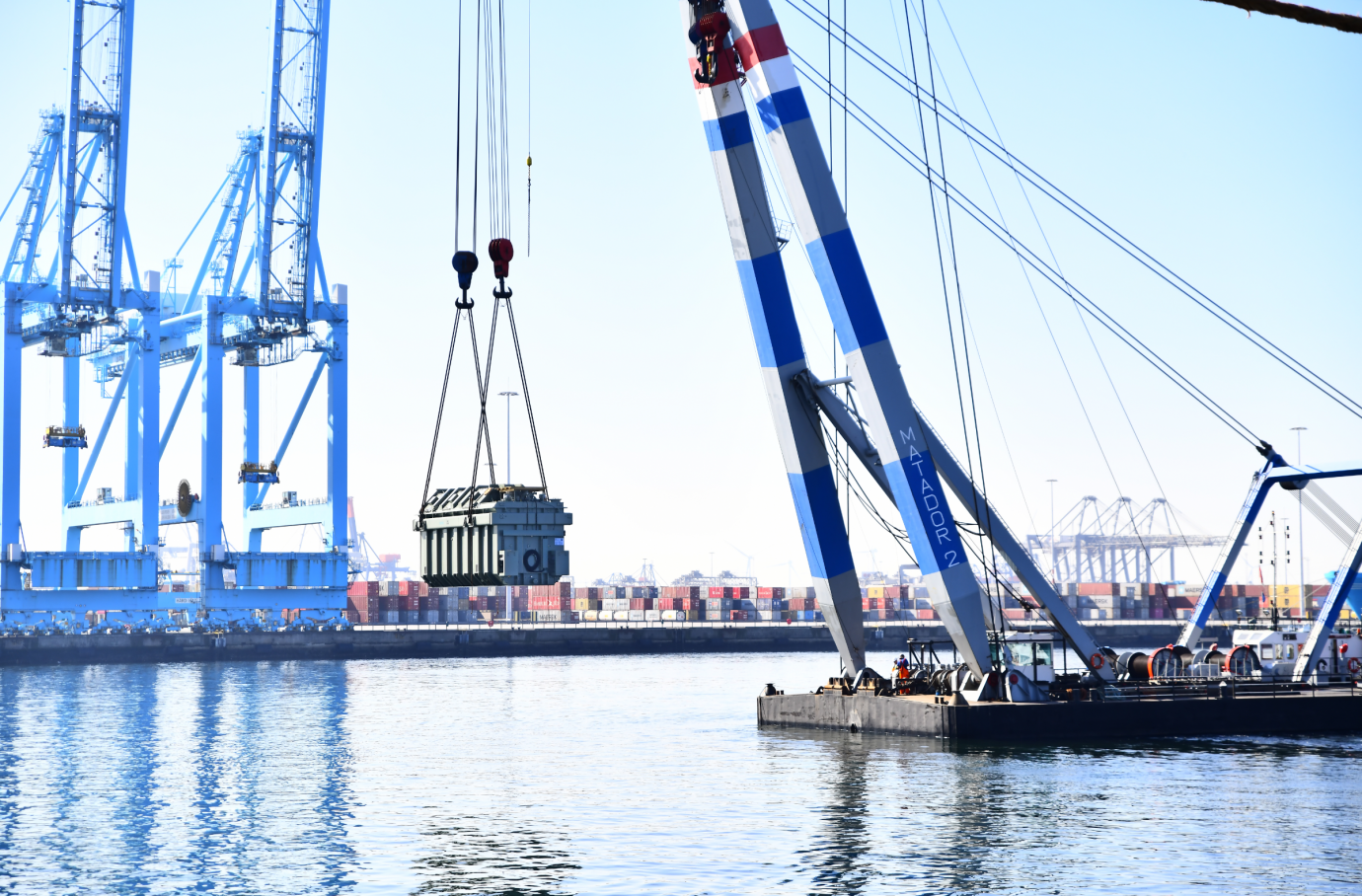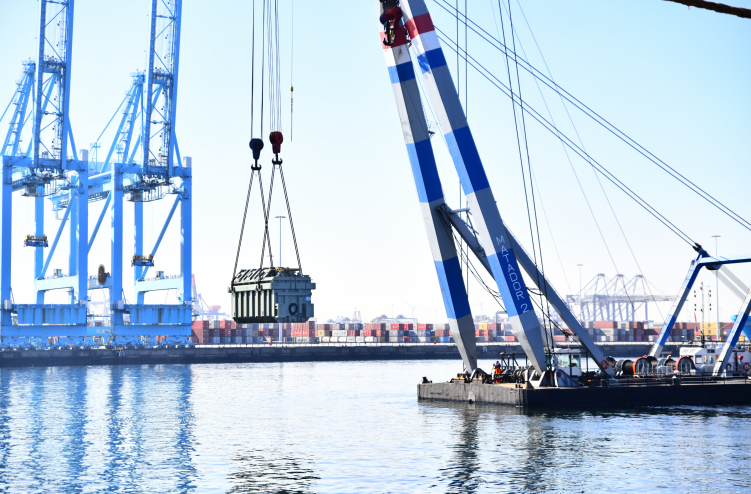Starting from 2020, we see two primary pathways to 2030 with different dynamics. One path is characterized by global co-operation, climate policies, and a focus on well-being, the other path by geopolitical tensions, profit over sustainability, and a focus on prosperity. These two paths will split up in four secondary pathways, leading to four scenarios for the world in 2050. Obviously this will have consequences for breakbulk.

The scenario of WuC contains increasing concerns about the (economic) consequences of external shocks like extreme weather, food and fuel availability. This leads to a turning point from 2030 onwards. Drastic measures to combat global warming. Radical increase in energy transition.
As the name of this scenario implies, the transition to a sustainable, fossil free society will start rather late in the thirties, only after climate related disasters lead to a strong response. Because goods are produced wherever most efficient or sustainable we see a revival of world trade. But high transport costs put a break on the growth in breakbulk. The development of breakbulk is almost identical to the CDG scenario, but starting from a lower base. By 2050, throughput will be 50% higher than in 2020.

Geopolitical tensions and mistrust hold a central role in this scenario. Competing economic interests in a fragmented world. Negligence of climate policies, increase in extreme weather events. Slow economic growth and shrinking EU population lead to a drop in cargo throughput.
This is the scenario with the lowest expected economic growth. Breakbulk demand in construction and industry is modest and the lowest of all scenarios. Also, offshore wind power will show the lowest growth. Breakbulk throughput will show a constant, gradual decline starting in the mid-twenties to 2050.

This scenario includes only modest economic growth because of trade barriers and diverging CO2 measures between countries/regions. In North West Europe, a focus on quality of life, bio-diversity, clean environment is high on the agenda. Strong decline in imports of fossil fuels and raw materials are expected.
In RWB, throughput of breakbulk cargoes represents the strongest growth. The main reason is that most of the energy-intensive industrial production (like Blast Furnaces, aluminum or copper smelters) will have disappeared by 2050. Therefore, Europe will be dependent on imports of (semi) finished products like slabs, blooms and billets, pipes and plate. Around 80% of throughput will be imports, the highest share of all scenarios.

In the scenario, there are stable geopolitical relations and global co-operation. Worldwide consensus on limiting global warming to 1.5 degrees. High investments are made in energy transition. Carbon neutrality is reached by 2050.
Strong GDP and trade growth and heavy investing in renewable energy are the drivers in this scenario. Offshore wind power increases to 70GW, leading to a strong growth in throughput of steel and Heavy Lift and Project Cargo.

The information and data contained in this white paper are based on scenarios. With no guarantees of completeness, accuracy, usefulness or timeliness. We assume no responsibility or liability for any errors or omissions in the content.
The most differentiating factor between the scenarios is the development of offshore wind power. Demand for wind power will grow and this will have a strong impact on the throughput of steel and Heavy Lift and Project Cargoes. In the most positive scenario throughput of steel and Heavy Lift & Project cargo could increase to more than 1 million tons. This not only refers to construction and export of monopiles (steel foundations), but also logistic projects (loading and unloading and assembling wind blades, turbines, nacelles etc.), and decommissioning activities. One of the key premises to calculate potential throughput volumes was an assumption of 130 tons of throughput per Megawatt. Rotterdam’s market share was estimated at 14%. A share that can fluctuate from year to year, depending on the planning of windpark projects and port choice. As these fluctuations are not predictable in advance we calculated with an average share.

Next, we looked at future demand for underlying commodities. Then, we looked at trade intensity (trade to GDP ratio) in the different scenarios and the strength of trade relations with Rotterdam. Finally, trade flows were translated to maritime im- and export flows through the port of Rotterdam.
To start off on a positive note, the future looks bright for breakbulk in 3 of the 4 scenarios. Throughput could increase from 6 million tons in reference year 2020 to 16 million tons in the most positive scenario. Only one scenario points to a drop in volumes (to 5 million tons).
Before we go deeper into the scenarios and the implications for breakbulk, a short explanation of the methodology might be interesting. First, the important drivers were determined: breakbulk is strongly related to GDP growth, construction and manufacturing (especially steel and non-ferrous metals). One important driver specific to breakbulk, is the construction of offshore windparks in the North Sea (see text box).
In this white paper, we will take a closer look at the different scenarios (‘Connected Deep Green’, ‘Regional Well-Being’, ‘Protective Markets’ and ‘Wake-up Call’) and see what insights they provide in the possible future of breakbulk in the port of Rotterdam.
As discussed in previous white papers, breakbulk will play an important role in the energy transition necessary to achieve carbon neutrality by 2050. However, by definition the future is uncertain. And how the breakbulk sector will develop will be dependent on changes in geopolitics, economics, society, and technology in the next decades.
In 2022, the Port of Rotterdam Authority developed four detailed, global scenarios for the years leading up to 2050. The purpose of these scenarios is to give direction to strategic decision-making and investments.
Breakbulk is an important sector for the port of Rotterdam. In this paper, we define breakbulk as not-containerized general cargo (so excluding containers and roll-on/roll-off). Although not the largest in volume, breakbulk is a very interesting sector because of its diversity in cargoes, value added, the number of specialized terminals, and last but not least its growth potential.

This scenario includes only modest economic growth because of trade barriers and diverging CO2 measures between countries/regions. In North West Europe, a focus on quality of life, bio-diversity, clean environment is high on the agenda. Strong decline in imports of fossil fuels and raw materials are expected.
In RWB, throughput of breakbulk cargoes represents the strongest growth. The main reason is that most of the energy-intensive industrial production (like Blast Furnaces, aluminum or copper smelters) will have disappeared by 2050. Therefore, Europe will be dependent on imports of (semi) finished products like slabs, blooms and billets, pipes and plate. Around 80% of throughput will be imports, the highest share of all scenarios.

The scenario of WuC contains increasing concerns about the (economic) consequences of external shocks like extreme weather, food and fuel availability. This leads to a turning point from 2030 onwards. Drastic measures to combat global warming. Radical increase in energy transition.
As the name of this scenario implies, the transition to a sustainable, fossil free society will start rather late in the thirties, only after climate related disasters lead to a strong response. Because goods are produced wherever most efficient or sustainable we see a revival of world trade. But high transport costs put a break on the growth in breakbulk. The development of breakbulk is almost identical to the CDG scenario, but starting from a lower base. By 2050, throughput will be 50% higher than in 2020.

Geopolitical tensions and mistrust hold a central role in this scenario. Competing economic interests in a fragmented world. Negligence of climate policies, increase in extreme weather events. Slow economic growth and shrinking EU population lead to a drop in cargo throughput.
This is the scenario with the lowest expected economic growth. Breakbulk demand in construction and industry is modest and the lowest of all scenarios. Also, offshore wind power will show the lowest growth. Breakbulk throughput will show a constant, gradual decline starting in the mid-twenties to 2050.

In the scenario, there are stable geopolitical relations and global co-operation. Worldwide consensus on limiting global warming to 1.5 degrees. High investments are made in energy transition. Carbon neutrality is reached by 2050.
Strong GDP and trade growth and heavy investing in renewable energy are the drivers in this scenario. Offshore wind power increases to 70GW, leading to a strong growth in throughput of steel and Heavy Lift and Project Cargo.
The information and data contained in this white paper are based on scenarios. With no guarantees of completeness, accuracy, usefulness or timeliness. We assume no responsibility or liability for any errors or omissions in the content.
The most differentiating factor between the scenarios is the development of offshore wind power. Demand for wind power will grow and this will have a strong impact on the throughput of steel and Heavy Lift and Project Cargoes. In the most positive scenario throughput of steel and Heavy Lift & Project cargo could increase to more than 1 million tons. This not only refers to construction and export of monopiles (steel foundations), but also logistic projects (loading and unloading and assembling wind blades, turbines, nacelles etc.), and decommissioning activities. One of the key premises to calculate potential throughput volumes was an assumption of 130 tons of throughput per Megawatt. Rotterdam’s market share was estimated at 14%. A share that can fluctuate from year to year, depending on the planning of windpark projects and port choice. As these fluctuations are not predictable in advance we calculated with an average share.
Starting from 2020, we see two primary pathways to 2030 with different dynamics. One path is characterized by global co-operation, climate policies, and a focus on well-being, the other path by geopolitical tensions, profit over sustainability, and a focus on prosperity. These two paths will split up in four secondary pathways, leading to four scenarios for the world in 2050. Obviously this will have consequences for breakbulk.
Next, we looked at future demand for underlying commodities. Then, we looked at trade intensity (trade to GDP ratio) in the different scenarios and the strength of trade relations with Rotterdam. Finally, trade flows were translated to maritime im- and export flows through the port of Rotterdam.

To start off on a positive note, the future looks bright for breakbulk in 3 of the 4 scenarios. Throughput could increase from 6 million tons in reference year 2020 to 16 million tons in the most positive scenario. Only one scenario points to a drop in volumes (to 5 million tons).
Before we go deeper into the scenarios and the implications for breakbulk, a short explanation of the methodology might be interesting. First, the important drivers were determined: breakbulk is strongly related to GDP growth, construction and manufacturing (especially steel and non-ferrous metals). One important driver specific to breakbulk, is the construction of offshore windparks in the North Sea (see text box).
In this white paper, we will take a closer look at the different scenarios (‘Connected Deep Green’, ‘Regional Well-Being’, ‘Protective Markets’ and ‘Wake-up Call’) and see what insights they provide in the possible future of breakbulk in the port of Rotterdam.
As discussed in previous white papers, breakbulk will play an important role in the energy transition necessary to achieve carbon neutrality by 2050. However, by definition the future is uncertain. And how the breakbulk sector will develop will be dependent on changes in geopolitics, economics, society, and technology in the next decades.
In 2022, the Port of Rotterdam Authority developed four detailed, global scenarios for the years leading up to 2050. The purpose of these scenarios is to give direction to strategic decision-making and investments.
Breakbulk is an important sector for the port of Rotterdam. In this paper, we define breakbulk as not-containerized general cargo (so excluding containers and roll-on/roll-off). Although not the largest in volume, breakbulk is a very interesting sector because of its diversity in cargoes, value added, the number of specialized terminals, and last but not least its growth potential.
